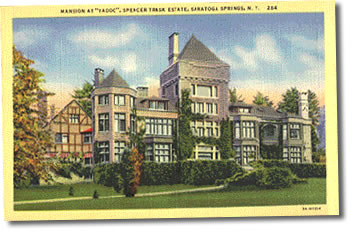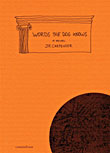frozen in time
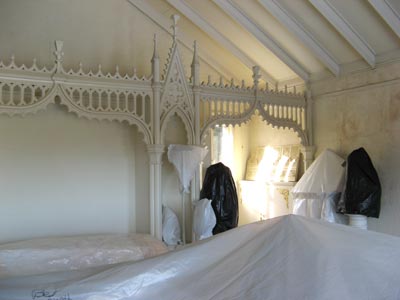
"One can imagine the whole scene; the chill in the countless rooms, the dry fountain in the atrium, the baptismal fonts and the throne chairs covered with sheets." John Cheever, A Century At Yaddo
Whenever I quote Cheever on Yaddo I feel compelled to balance things out with a word from my friend Camilo, a past guest of Yaddo, who may well terminate our correspondence once he figures out that I’m pillaging his old emails for raw material. I can’t resist. Camilo, like me, is not an American and his descriptions share some of my semi-detached pot-colonial train-wreck fascination with the American Empire:
"The mansion itself, which we visited today, is an impressive scenario of ghostly splendour and opulence. It is a most intriguing and enticing space, tinged with history and everywhere you turn there is another famous name. The people who come here are the cultural "over-achievers" of this country and you hear places like Yale and Harvard being thrown around, but really a good and affable environment, where you meet wonderful people and put on the pounds like a criminal."

Speaking of over-achievers, here is Flannery O'Connor circa 1948 in Katrina Trask's "Tower Room" which many people think of as Truman Capote's room. I was in it yesterday (see above photo) but no-one calls it J. R. Carpenter's room.
To review the Yaddo pre-history: After fighting in the American Revolutionary War Battle of Saratoga Campaign in 1777, Jacobus Barhyte builds a tavern on this site and runs it successfully for the rest of his life. The Barhytes are buried on the grounds. 1856, Dr. Richard S. Childs moves the tavern and builds and ornate Italianate Late Victorian Queen Anne Villa on the site. By 1871 he’s in financial ruin and the villa sits abandoned for ten years. 1881, the Trasks rent the Childs place for a summer get-away. In her Chronicles of Yaddo our benefactress Katrina Trask writes:
"One morning in the late autumn of 1881, I sat in the desolate hall of the hideous old house which we had rented and occupied for five months… It mattered not at all that there were no comforts, not even running water; that the broken locks, open doors and every possible inconvenience tried our patience – if we allowed ourselves to think about them; all that was but as the dust of a high mountain road..."
Katrina’s longwinded, for a poet, but you get the idea: it was a hideous house. It burned down in 1891. An accident? Or a stroke of luck… Either way, the Trasks rebuilt immediately, completing the present mansion in 1893. The fireplace in the great hall sports a Tiffany mosaic of a phoenix rising from the ashes.
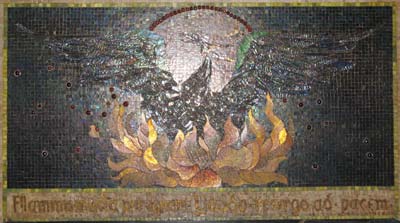
The Latin inscription reads:
flammis invicta per ignem Yaddo ad resurgo pacem
Our mansion, as I like to think of the present house, was modeled on Haddon Hall in Derbyshire. One problem with building an Elizabethan English country house in upstate New York is how much colder it is here. And hotter! In the summer, writers toil away to the whirr of electric fans like in the olden days, or, like how we do in Montreal, without any air conditioning.
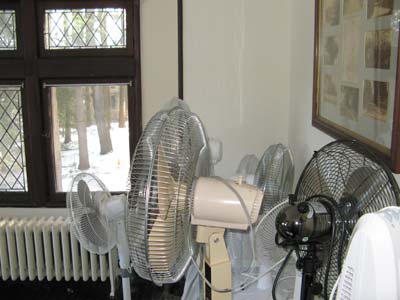
I doubt I’m cut out for the social strain of a high summer season stay in the mansion, but I know I’ll apply one day. I’m just too curious a person. No matter how small a garret I am granted, no matter how loud it is, no matter how hot the days and bat infested and debauched the nights, and no matter little work I get done, I’d like join the fray just once so I can write about it after. I’m sure there’s a story lurking in every corner. Take this still life, for example. At least a thousand words.
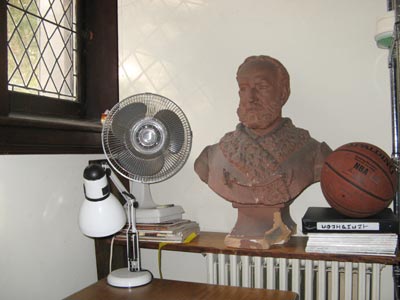
. . . . .
Labels: Yaddo
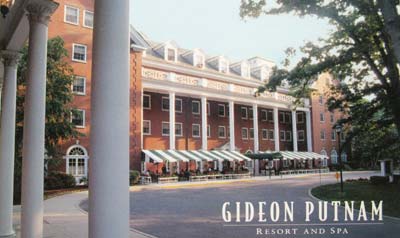
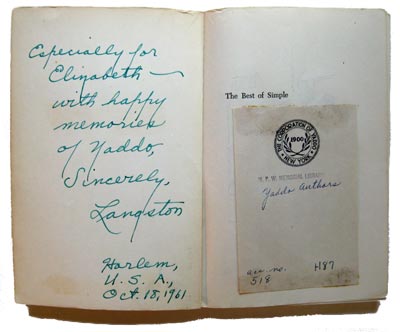
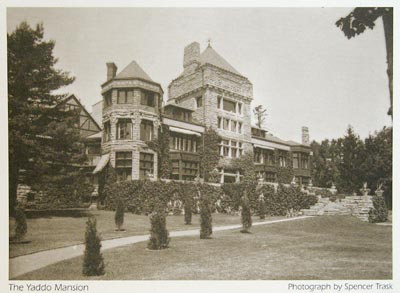
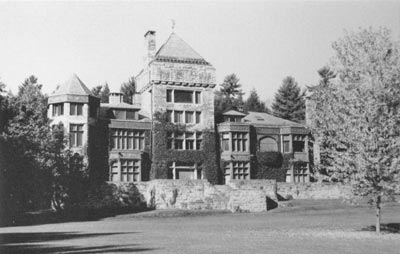
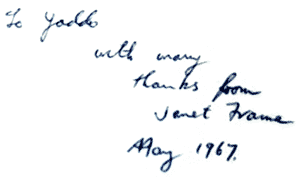
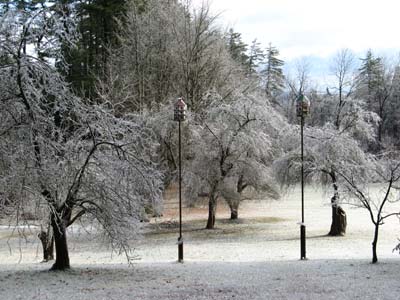
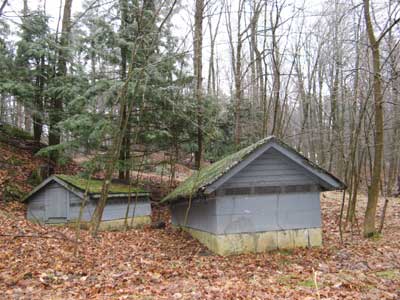
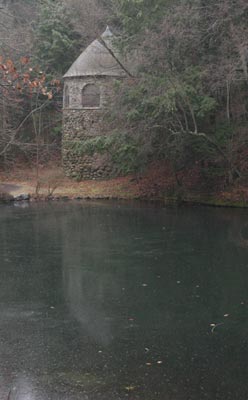
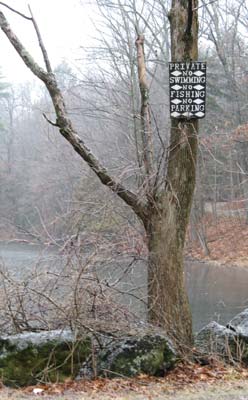
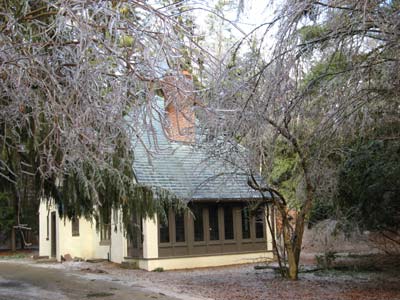
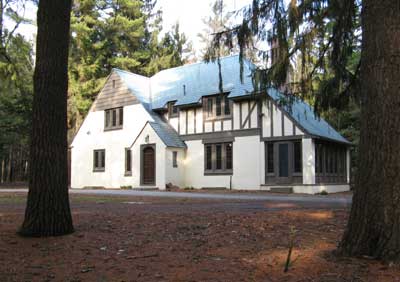
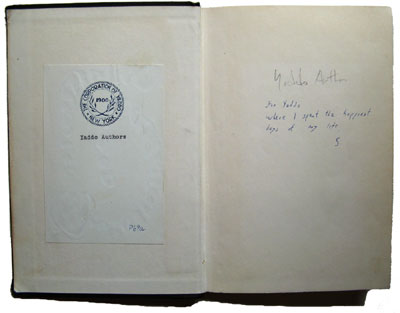
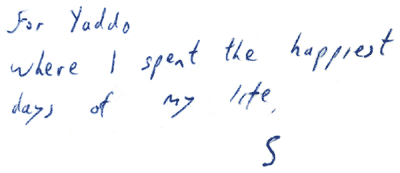
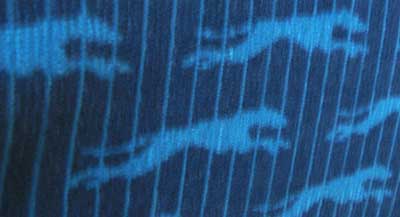 Rain cratered the Saratoga Springs bus stop parking lot puddles. I found a taxi right away, but the driver had never head of Yaddo either. And he was al local. I was starting to think that Yaddo was fictional. Makes sense considering it’s a place you hear about most from fiction writers. I quickly learned, from my chatty cranked-up cabbie, that he was really a bricklayer – in the union and everything, he assured me – who had only just started driving a cab after his recent injury. Luckily I had consulted a number of online maps prior to my departure and was able to tell him where to take me: it’s on Union Avenue, past the racetrack. It’s an estate; look for a gate, or an archway or something. So what are you going to do at Ya-doo; he wants to know. It’s a place for artists and writers… You mean poets? Yeah… Well, it turns out my fast-talking bricklaying cabbie is a poet. What do I want to hear – a wisdom poem, a love poem, or what? Okay, give me your best wisdom poem. And off he goes. A street poet. A white rapper. Very 8 Mile.
Rain cratered the Saratoga Springs bus stop parking lot puddles. I found a taxi right away, but the driver had never head of Yaddo either. And he was al local. I was starting to think that Yaddo was fictional. Makes sense considering it’s a place you hear about most from fiction writers. I quickly learned, from my chatty cranked-up cabbie, that he was really a bricklayer – in the union and everything, he assured me – who had only just started driving a cab after his recent injury. Luckily I had consulted a number of online maps prior to my departure and was able to tell him where to take me: it’s on Union Avenue, past the racetrack. It’s an estate; look for a gate, or an archway or something. So what are you going to do at Ya-doo; he wants to know. It’s a place for artists and writers… You mean poets? Yeah… Well, it turns out my fast-talking bricklaying cabbie is a poet. What do I want to hear – a wisdom poem, a love poem, or what? Okay, give me your best wisdom poem. And off he goes. A street poet. A white rapper. Very 8 Mile.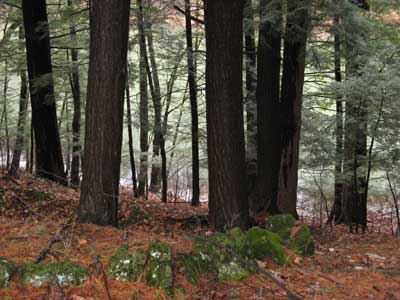 Just when I think he’s going to challenge me to a poetry slam duel right there in the cab, he spots the gate. Ya-doo! he cries. Good eye. We turn in onto a narrow road that winds through close tall evergreens, across a river, past a waterfall… So you’ve never been here before? No. Damn! Now that’s a mansion. We take a few wrong turns and wind up out on the road again. He pulls a u-turn across four lanes of traffic and then another one and there we are back at the gate. When we finally find the office I ask him to wait till I find someone who can tell me where to take my luggage. He comes into the office with me. We’re both impressed by how old the building is. This wall is plaster, he says. You couldn’t punch a hole through it if you tried. Good to know. A few minutes later, and not a moment too soon, the programme coordinator gets into the cab with us and we proceed deeper into the estate. At the dreamy creamy cottage that will be my home for the next 5.5 weeks, we get out and I ask my cabbie what I own him. Whatever you want to give, he says. This one’s off-meter.
Just when I think he’s going to challenge me to a poetry slam duel right there in the cab, he spots the gate. Ya-doo! he cries. Good eye. We turn in onto a narrow road that winds through close tall evergreens, across a river, past a waterfall… So you’ve never been here before? No. Damn! Now that’s a mansion. We take a few wrong turns and wind up out on the road again. He pulls a u-turn across four lanes of traffic and then another one and there we are back at the gate. When we finally find the office I ask him to wait till I find someone who can tell me where to take my luggage. He comes into the office with me. We’re both impressed by how old the building is. This wall is plaster, he says. You couldn’t punch a hole through it if you tried. Good to know. A few minutes later, and not a moment too soon, the programme coordinator gets into the cab with us and we proceed deeper into the estate. At the dreamy creamy cottage that will be my home for the next 5.5 weeks, we get out and I ask my cabbie what I own him. Whatever you want to give, he says. This one’s off-meter. 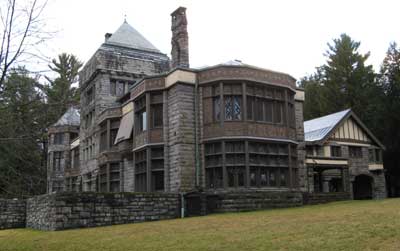 And so now all of a sudden I’m here. Yaddo does exist after all. The mansion is closed for the winter, though it hardly feels like winter. It’s January and the grass is green. I live in Pine Garde, a house much lovelier than its name, which is evocative of cleaning supplies and deodorants. My studio is in the sun porch. My other studio is in the back off of my bedroom. Two studios? Yes, and an en suite bathroom. And a kitchen and living room with a working fireplace and only one other writer living and working in the house. Could I be dreaming all this? It is quite possible that I am.
And so now all of a sudden I’m here. Yaddo does exist after all. The mansion is closed for the winter, though it hardly feels like winter. It’s January and the grass is green. I live in Pine Garde, a house much lovelier than its name, which is evocative of cleaning supplies and deodorants. My studio is in the sun porch. My other studio is in the back off of my bedroom. Two studios? Yes, and an en suite bathroom. And a kitchen and living room with a working fireplace and only one other writer living and working in the house. Could I be dreaming all this? It is quite possible that I am. 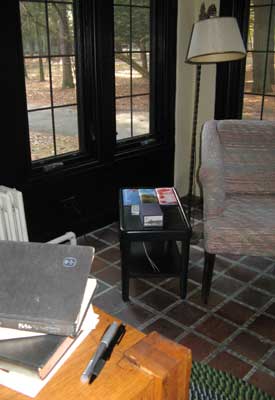 I arrived at Yaddo exhausted, trailing a string of late nights, sleepless nights, groggy mornings and busy days. I’m sure I made a less than clever first impression. I kept re-asking people’s names at dinner but they were nice about it. Most imagined Montreal was a long day’s travel from Saratoga. And in an attempt to justify my mental sluggishness I did little to dispel this myth. Geographically Montreal and New York City are the same distance from Saratoga Springs. Culturally, New York is very close to here. Many of the New Yorkers in residence have been to Montreal and love the city. I am the only Canadian here at the moment and although I have not traveled a greater distance than most to get here, yesterday, after dinner, perusing the library of Yaddo Authors, it came over me what a long journey it has been.
I arrived at Yaddo exhausted, trailing a string of late nights, sleepless nights, groggy mornings and busy days. I’m sure I made a less than clever first impression. I kept re-asking people’s names at dinner but they were nice about it. Most imagined Montreal was a long day’s travel from Saratoga. And in an attempt to justify my mental sluggishness I did little to dispel this myth. Geographically Montreal and New York City are the same distance from Saratoga Springs. Culturally, New York is very close to here. Many of the New Yorkers in residence have been to Montreal and love the city. I am the only Canadian here at the moment and although I have not traveled a greater distance than most to get here, yesterday, after dinner, perusing the library of Yaddo Authors, it came over me what a long journey it has been. 
